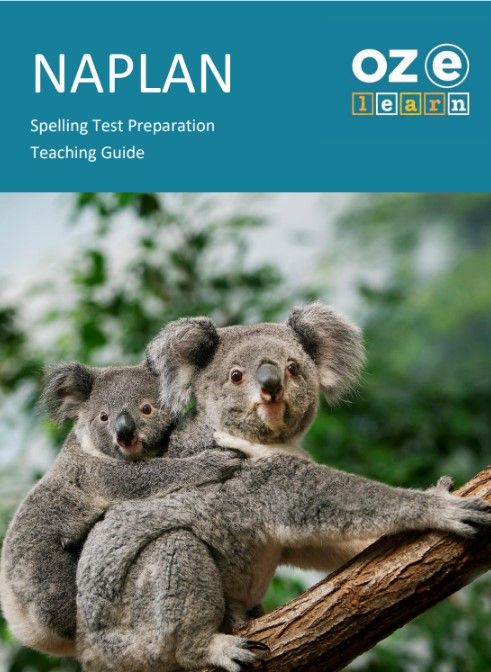NAPLAN Test Preparation: Spelling – Years 3 and 5
Direct Instruction

Teaching Resources
Overview
The NAPLAN Spelling program is a program for Year 3 and Year 5 students. It aligns to the Australian Curriculum English Strand:
- Recognise and know how to write most high frequency words including some homophones. (ACELA1486)
- Understand how to use letter–sound relationships and less common letter patterns to spell words. (ACELA1485)
- Know how to use common prefixes and suffixes, and generalisations for adding a suffix to a base word. (ACELA1827)
- Understand how to apply knowledge of letter–sound relationships, syllables, and blending and segmenting to fluently read and write multisyllabic words with more complex letter patterns. (ACELA1826)
- Understand how to use phonic knowledge to read and write less familiar words that share common letter patterns but have different pronunciations. (ACELA1829)
- Understand how to use knowledge of known words, base words, prefixes and suffixes, word origins, letter patterns and spelling generalisations to spell new words. (ACELA1513)
- Explore less common plurals, and understand how a suffix changes the meaning or grammatical form of a word. (ACELA1514)
Learning Objectives
In In Lessons 1 to 15, students learn about:
- homonyms – right, write, ate, eight, blue, blew, knew, new, flour, flower, whole, hole
- morphographic rules
- identify which oi/oy sound letters to use to spell a word
- dropping the final e
- identify which ou/ow sound letters to use to spell a word
- doubling the final letter when adding a new morphograph.
Success Criteria
- Use knowledge of letter–sound relationships including consonant and vowel clusters and high-frequency words to spell words accurately.
